[et_pb_section fb_built=”1″ _builder_version=”4.23.1″ _module_preset=”default” custom_margin=”0px||0px||false|false” custom_padding=”0px||0px||false|false” border_width_right=”2px” border_color_right=”#f8f8f8″ global_colors_info=”{}”][et_pb_row _builder_version=”4.23.1″ _module_preset=”default” width=”90%” max_width=”1500px” collapsed=”off” global_colors_info=”{}”][et_pb_column type=”4_4″ _builder_version=”4.23.1″ _module_preset=”default” global_colors_info=”{}”][et_pb_text _builder_version=”4.23.1″ _module_preset=”default” text_text_color=”#000000″ custom_margin=”0px||0px||false|false” custom_padding=”0px||0px||false|false” global_colors_info=”{}”]
[/et_pb_text][/et_pb_column][/et_pb_row][/et_pb_section][et_pb_section fb_built=”1″ _builder_version=”4.23.1″ background_color=”#f8f8f8″ custom_margin=”0px||0px||false|false” custom_padding=”0px||0px||false|false” border_width_right=”2px” border_color_right=”#f8f8f8″ global_colors_info=”{}”][et_pb_row _builder_version=”4.23.1″ width=”90%” max_width=”1500px” collapsed=”off” global_colors_info=”{}”][et_pb_column type=”4_4″ _builder_version=”4.16″ global_colors_info=”{}”][et_pb_text _builder_version=”4.27.4″ header_font=”Times New Roman||||||||” header_2_font=”|700|||||||” header_2_text_align=”justify” header_2_text_color=”#000000″ custom_margin=”||||false|false” custom_padding=”||||false|false” hover_enabled=”0″ border_width_bottom=”3px” border_color_bottom=”#e6e6e6″ global_colors_info=”{}” sticky_enabled=”0″]
Turck Photoelectric Sensor – Diffuse Mode Sensor
[/et_pb_text][/et_pb_column][/et_pb_row][et_pb_row column_structure=”3_5,2_5″ _builder_version=”4.23.1″ _module_preset=”default” width=”90%” max_width=”1500px” global_colors_info=”{}” disabled_on=”on|on|on” disabled=”on”][et_pb_column type=”3_5″ _builder_version=”4.23.1″ _module_preset=”default” global_colors_info=”{}”][et_pb_text _builder_version=”4.23.1″ text_font=”Times New Roman||||||||” text_text_color=”#000000″ header_font=”Times New Roman||||||||” header_3_font=”|600|||||||” header_3_text_align=”justify” header_3_text_color=”#000000″ text_orientation=”justified” global_colors_info=”{}”]
IndMALL presents an extensive range of Turck Photoelectric Sensors, designed for varied industrial applications. These Turck sensors, renowned for their precision and durability, are crucial in automating and optimizing production processes. Our collection includes Through Beam Sensors, Retro-reflective Sensors, and Diffuse Mode Sensors, each tailored to specific needs. With a mix of PNP and NPN outputs, LED visibility, sensitivity control, and extensive operating ranges, these Turck Photo Sensors ensure reliability and efficiency in demanding environments.
[/et_pb_text][/et_pb_column][et_pb_column type=”2_5″ _builder_version=”4.23.1″ _module_preset=”default” global_colors_info=”{}”][et_pb_image src=”https://www.indmall.in/wp-content/uploads/2023/12/turck-photoelectric-sensor.jpg” alt=”Turck Photoelectric Sensor” title_text=”turck-photoelectric-sensor” _builder_version=”4.23.1″ _module_preset=”default” box_shadow_style=”preset6″ global_colors_info=”{}”][/et_pb_image][/et_pb_column][/et_pb_row][et_pb_row _builder_version=”4.27.4″ _module_preset=”default”][et_pb_column _builder_version=”4.27.4″ _module_preset=”default” type=”4_4″][et_pb_text _builder_version=”4.27.4″ text_font=”Times New Roman||||||||” text_text_color=”#000000″ header_font=”Times New Roman||||||||” header_3_font=”|600|||||||” header_3_text_align=”justify” header_3_text_color=”#000000″ text_orientation=”justified” hover_enabled=”0″ global_colors_info=”{}” sticky_enabled=”0″]
Turck photoelectric sensors function as optical detection devices enabling consistent object presence, position, and distance measurement across automation applications. The Turck Photoelectric Sensor, manufactured by Turck, uses through-beam, retro-reflective, and diffuse operating principles with solid-state emitters, photodiodes, integrated amplifiers, standardized housings, threaded mounting options, and discrete or analog output interfaces supporting PLC inputs across industrial automation in India.
A Turck sensor in this category employs optical alignment, background suppression choices, solid mechanical housings, and classification formats typical of diffuse reflective, retro-reflective, and through-beam systems, enabling reliable detection of objects, materials, and process targets in diverse industrial sensing environments. An optical sensing technology type with a solid-state photoelectric structure, standardized through-beam, retro-reflective, and diffuse classification attributes, and discrete or analog interface types designed for integration with industrial control systems across automated machinery.
[/et_pb_text][/et_pb_column][/et_pb_row][/et_pb_section][et_pb_section fb_built=”1″ _builder_version=”4.23.1″ _module_preset=”default” background_enable_color=”off” border_width_right=”2px” border_color_right=”#f8f8f8″ locked=”off” collapsed=”off” global_colors_info=”{}”][et_pb_row column_structure=”2_5,3_5″ _builder_version=”4.23.1″ _module_preset=”default” width=”90%” max_width=”1500px” collapsed=”on” global_colors_info=”{}”][et_pb_column type=”2_5″ _builder_version=”4.18.0″ _module_preset=”default” global_colors_info=”{}”][et_pb_image src=”https://www.indmall.in/wp-content/uploads/2023/12/turck-through-beam-sensor.jpg” alt=”Turck Through Beam Sensor” title_text=”turck-through-beam-sensor” _builder_version=”4.23.1″ _module_preset=”default” box_shadow_style=”preset6″ global_colors_info=”{}”][/et_pb_image][/et_pb_column][et_pb_column type=”3_5″ _builder_version=”4.18.0″ _module_preset=”default” global_colors_info=”{}”][et_pb_text _builder_version=”4.27.4″ _module_preset=”default” text_text_color=”#000000″ header_2_text_color=”#000000″ hover_enabled=”0″ global_colors_info=”{}” sticky_enabled=”0″]
Turck Through Beam Sensor – M18-3
- Connectors: M12 × 1 and M8 × 1, 4-pin configurations.
- Protection Class: IP67, with some featuring IP67/IP69K.
- Operating Temperature Range: Commonly -40 °C to +70 °C.
- Operating Voltage: Uniformly 10–30 VDC across all models.
- Output Types: Mix of PNP and NPN switching outputs
[/et_pb_text][/et_pb_column][/et_pb_row][et_pb_row column_structure=”2_5,3_5″ _builder_version=”4.23.1″ _module_preset=”default” width=”90%” max_width=”1500px” collapsed=”on” global_colors_info=”{}”][et_pb_column type=”2_5″ _builder_version=”4.18.0″ _module_preset=”default” global_colors_info=”{}”][et_pb_image src=”https://www.indmall.in/wp-content/uploads/2023/12/turck-retro-reflective-sensor.jpg” alt=”Turck Retro-reflective Sensor” title_text=”turck-retro-reflective-sensor” _builder_version=”4.23.1″ _module_preset=”default” box_shadow_style=”preset6″ global_colors_info=”{}”][/et_pb_image][/et_pb_column][et_pb_column type=”3_5″ _builder_version=”4.18.0″ _module_preset=”default” global_colors_info=”{}”][et_pb_text _builder_version=”4.27.4″ _module_preset=”default” text_text_color=”#000000″ header_2_text_color=”#000000″ hover_enabled=”0″ global_colors_info=”{}” sticky_enabled=”0″]
Turck Retro-reflective Sensor – QS18LPC
- Connectivity: M12 × 1 or M8 × 1, 4-pin connectors; PVC cables
- Protection: IP67 rated.
- Visibility: LED all-round.
- Sensitivity Control: Teach button or potentiometer.
- Voltage: 10–30 VDC.
- Output: PNP/NPN, light/dark operation, changeover.
[/et_pb_text][/et_pb_column][/et_pb_row][et_pb_row column_structure=”2_5,3_5″ _builder_version=”4.23.1″ _module_preset=”default” width=”90%” max_width=”1500px” collapsed=”off” global_colors_info=”{}”][et_pb_column type=”2_5″ _builder_version=”4.18.0″ _module_preset=”default” global_colors_info=”{}”][et_pb_image src=”https://www.indmall.in/wp-content/uploads/2023/12/turck-diffuse-mode-sensors.webp” alt=”Turck Diffuse Mode Sensors” title_text=”turck-diffuse-mode-sensors” _builder_version=”4.23.1″ _module_preset=”default” box_shadow_style=”preset6″ global_colors_info=”{}”][/et_pb_image][/et_pb_column][et_pb_column type=”3_5″ _builder_version=”4.18.0″ _module_preset=”default” global_colors_info=”{}”][et_pb_text _builder_version=”4.27.4″ _module_preset=”default” text_text_color=”#000000″ header_2_text_color=”#000000″ hover_enabled=”0″ global_colors_info=”{}” sticky_enabled=”0″]
Turck Diffuse Mode Sensors – Q4X Series
- Laser Type: Class 1 and 2, red (655 or 660 nm).
- Voltage: 10–30 VDC (some 12–30 VDC).
- Output: PNP/NPN, IO-Link on select models.
- Range: 35 mm to 12 m.
- Design: Stainless steel, rectangular, LED display.
- Protection: IP67/69K, ECOLAB-certified.
- Connectivity: M12 × 1, 4/5-pin connectors.
[/et_pb_text][/et_pb_column][/et_pb_row][/et_pb_section][et_pb_section fb_built=”1″ disabled_on=”off|off|off” _builder_version=”4.23.1″ _module_preset=”default” background_color=”#f8f8f8″ border_width_right=”2px” border_color_right=”#f8f8f8″ locked=”off” collapsed=”off” global_colors_info=”{}”][et_pb_row disabled_on=”off|off|off” _builder_version=”4.23.1″ _module_preset=”default” width=”90%” max_width=”1500px” global_colors_info=”{}”][et_pb_column type=”4_4″ _builder_version=”4.23.1″ _module_preset=”default” global_colors_info=”{}”][et_pb_text _builder_version=”4.27.4″ _module_preset=”default” text_text_color=”#000000″ header_2_text_align=”center” header_2_text_color=”#000000″ header_3_text_color=”#000000″ header_3_font_size=”19px” hover_enabled=”0″ global_colors_info=”{}” sticky_enabled=”0″]
Product List:
Model No |
Image |
Operating mode |
Range |
Output function |
Switching frequency |
Electrical connection |
|---|---|---|---|---|---|---|
| QS18VP6RB | 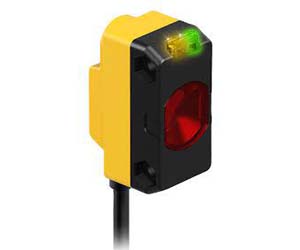
|
Receiver | 0…3000 mm | NO/NC, PNP | ≤ 400 Hz | Cable, 2 m, PVC |
| QS18VP6LPQ8 | 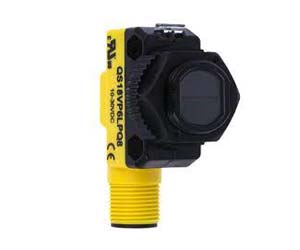
|
Polarized | 50…3500 mm | NO/NC, PNP | ≤ 800 Hz | Connector, M12 × 1, PVC |
| Q4XFPLAF310-Q8 | 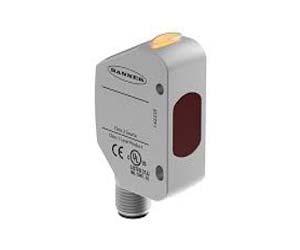
|
Background/foreground suppression | 35…310 mm | NO/NC, PNP | – | Connector, M12 × 1, PVC |
| QS18EP6LPQ8 | 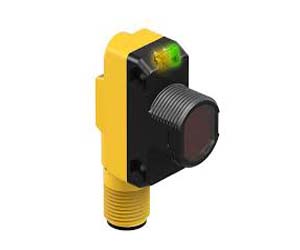
|
Polarized | 50…3500 mm | NO contact, PNP | ≤ 833 H | Connector, M12 × 1, PVC |
| S18SP6RQ | 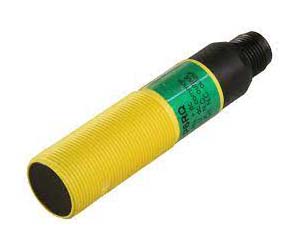
|
Receiver | 0…20000 mm | Connection programmable, PNP | ≤ 160 Hz | Connector, M12 × 1, PVC |
[/et_pb_text][/et_pb_column][/et_pb_row][/et_pb_section][et_pb_section fb_built=”1″ _builder_version=”4.23.1″ _module_preset=”default” background_enable_color=”off” border_width_right=”2px” border_color_right=”#f8f8f8″ collapsed=”off” global_colors_info=”{}”][et_pb_row _builder_version=”4.23.1″ _module_preset=”default” width=”90%” max_width=”1500px” global_colors_info=”{}”][et_pb_column type=”4_4″ _builder_version=”4.21.0″ _module_preset=”default” global_colors_info=”{}”][et_pb_text _builder_version=”4.22.1″ _module_preset=”default” header_2_text_align=”center” header_2_text_color=”#000000″ global_colors_info=”{}”]
Frequently Asked Questions
[/et_pb_text][/et_pb_column][/et_pb_row][et_pb_row _builder_version=”4.23.1″ _module_preset=”default” width=”90%” max_width=”1500px” global_colors_info=”{}”][et_pb_column type=”4_4″ _builder_version=”4.21.0″ _module_preset=”default” global_colors_info=”{}”][et_pb_accordion open_toggle_text_color=”#000000″ _builder_version=”4.23.1″ _module_preset=”default” toggle_text_color=”#000000″ toggle_font=”|600|||||||” body_text_color=”#000000″ global_colors_info=”{}”][et_pb_accordion_item title=”How does a photoelectric sensor work?” open=”on” open_toggle_text_color=”#000000″ _builder_version=”4.23.1″ _module_preset=”default” global_colors_info=”{}” toggle_text_color=”#000000″ toggle_level=”h3″ toggle_font_size=”19px”]
A photoelectric sensor operates using light emission and reception. It emits light from the Emitter, which the Receiver captures. Light interruption or reflection by an object alters the light received. The Receiver senses this variation, transforming it into electrical signals. This mechanism enables object detection and positioning.
[/et_pb_accordion_item][et_pb_accordion_item title=”Why do we use photoelectric sensors?” open_toggle_text_color=”#000000″ _builder_version=”4.23.1″ _module_preset=”default” global_colors_info=”{}” toggle_text_color=”#000000″ toggle_level=”h3″ toggle_font_size=”19px” open=”off”]
Photoelectric sensors are vital for detecting objects’ presence, absence, or distance. They utilize a light source, typically infrared, and a photoelectric receiver. These sensors are extensively employed in industrial manufacturing processes. Their accuracy and reliability make them indispensable in automation and quality control.
[/et_pb_accordion_item][et_pb_accordion_item title=”What are the examples of photoelectric sensors?” open_toggle_text_color=”#000000″ _builder_version=”4.23.1″ _module_preset=”default” global_colors_info=”{}” toggle_text_color=”#000000″ toggle_level=”h3″ toggle_font_size=”19px” open=”off”]
Photoelectric sensors have diverse applications across various industries. They detect and orient objects on production lines, ensuring efficient process flow. These sensors also count items accurately, aiding in inventory management. Additionally, they enhance safety by stopping automatic doors from closing on obstacles. Their versatility makes them essential in automation and safety systems.
[/et_pb_accordion_item][/et_pb_accordion][/et_pb_column][/et_pb_row][et_pb_row _builder_version=”4.23.1″ _module_preset=”default” width=”90%” max_width=”1500px” global_colors_info=”{}”][et_pb_column type=”4_4″ _builder_version=”4.23.1″ _module_preset=”default” global_colors_info=”{}”][et_pb_text _builder_version=”4.27.4″ _module_preset=”default” text_text_color=”#000000″ hover_enabled=”0″ global_colors_info=”{}” sticky_enabled=”0″]
Please Share your Turck Photoelectric Sensor requirement to the mobile number +91 79955 44066
[/et_pb_text][/et_pb_column][/et_pb_row][/et_pb_section][et_pb_section fb_built=”1″ disabled_on=”on|on|on” admin_label=”Section” _builder_version=”4.18.0″ background_enable_color=”off” custom_margin=”0px||0px||false|false” custom_padding=”10px||10px||false|false” disabled=”on” collapsed=”on” global_colors_info=”{}”][et_pb_row column_structure=”1_3,1_3,1_3″ _builder_version=”4.16″ global_colors_info=”{}”][et_pb_column type=”1_3″ _builder_version=”4.16″ background_color=”#ffffff” custom_padding=”20px|20px|20px|20px|false|false” global_colors_info=”{}”][et_pb_image src=”https://www.indmall.in/wp-content/uploads/2023/12/autonics-pressure-sensors-2.jpg” alt=”Autonics Pressure Sensors” title_text=”autonics-pressure-sensors” align=”center” _builder_version=”4.18.0″ box_shadow_style=”preset1″ global_colors_info=”{}”][/et_pb_image][et_pb_text _builder_version=”4.23.1″ text_text_color=”#000000″ header_2_text_align=”justify” header_2_text_color=”#0c71c3″ text_orientation=”justified” border_width_bottom=”1px” border_color_bottom=”#ededed” global_colors_info=”{}”]
KT-302H Series
KT-302H Series pressure transmitters are intelligent pressure transmitters with flexible display viewing angle, HART protocol compatibility.
[/et_pb_text][et_pb_button button_url=”https://challaturu.com/manual/Autonics-Pressure-Transmitter-KT-302H-Series-IndMALL.pdf” url_new_window=”on” button_text=”Data Sheet” button_alignment=”center” disabled_on=”on|on|on” _builder_version=”4.16″ custom_button=”on” button_text_size=”14px” button_text_color=”#ffffff” button_bg_color=”#32a067″ button_border_color=”#32a067″ button_border_radius=”20px” button_use_icon=”off” disabled=”on” global_colors_info=”{}”][/et_pb_button][/et_pb_column][et_pb_column type=”1_3″ _builder_version=”4.16″ background_color=”#ffffff” custom_padding=”20px|20px|20px|20px|false|false” global_colors_info=”{}”][et_pb_image src=”https://www.indmall.in/wp-content/uploads/2022/09/autonics-pressure-sensor.jpg” alt=”Autonics Pressure Sensor” title_text=”autonics-pressure-sensor” align=”center” _builder_version=”4.18.0″ box_shadow_style=”preset1″ global_colors_info=”{}”][/et_pb_image][et_pb_text _builder_version=”4.18.0″ text_text_color=”#000000″ header_2_text_align=”justify” header_2_text_color=”#0c71c3″ text_orientation=”justified” border_width_bottom=”1px” border_color_bottom=”#ededed” global_colors_info=”{}”]
PSA Series
Square Type Digital Display Pressure Sensors,High display resolution : negative pressure 0.1kPa/standard pressure..
[/et_pb_text][et_pb_button button_url=”https://challaturu.com/manual/Autonics-Pressure-Sensors-PSA-Series-IndMALL.pdf” url_new_window=”on” button_text=”Data Sheet” button_alignment=”center” disabled_on=”on|on|on” _builder_version=”4.16″ custom_button=”on” button_text_size=”14px” button_text_color=”#ffffff” button_bg_color=”#32a067″ button_border_color=”#32a067″ button_border_radius=”20px” button_use_icon=”off” disabled=”on” global_colors_info=”{}”][/et_pb_button][/et_pb_column][et_pb_column type=”1_3″ _builder_version=”4.16″ background_color=”#ffffff” custom_padding=”20px|20px|20px|20px|false|false” global_colors_info=”{}”][et_pb_image src=”https://www.indmall.in/wp-content/uploads/2022/09/autonics-pressure-switch.jpg” alt=”Autonics Pressure Switch” title_text=”autonics-pressure-switch” align=”center” _builder_version=”4.18.0″ box_shadow_style=”preset1″ global_colors_info=”{}”][/et_pb_image][et_pb_text _builder_version=”4.18.0″ text_text_color=”#000000″ header_2_text_align=”justify” header_2_text_color=”#0c71c3″ text_orientation=”justified” border_width_bottom=”1px” border_color_bottom=”#ededed” global_colors_info=”{}”]
PSAN Series
Compact Digital Display Pressure Sensors, Pressure measurement of any gas, liquid or oil (except substances….
[/et_pb_text][et_pb_button button_url=”https://challaturu.com/manual/Autonics-Digital-Pressure-Sensors-PSAN-Series-IndMALL.pdf” url_new_window=”on” button_text=”Data Sheet” button_alignment=”center” disabled_on=”on|on|on” _builder_version=”4.18.0″ custom_button=”on” button_text_size=”14px” button_text_color=”#ffffff” button_bg_color=”#32a067″ button_border_color=”#32a067″ button_border_radius=”20px” button_use_icon=”off” disabled=”on” global_colors_info=”{}”][/et_pb_button][/et_pb_column][/et_pb_row][et_pb_row column_structure=”1_3,1_3,1_3″ _builder_version=”4.16″ global_colors_info=”{}”][et_pb_column type=”1_3″ _builder_version=”4.16″ background_color=”#ffffff” custom_padding=”20px|20px|20px|20px|false|false” global_colors_info=”{}”][et_pb_image src=”https://www.indmall.in/wp-content/uploads/2022/09/autonics-pressure-transmitter.jpg” alt=”Autonics Pressure Transmitter” title_text=”autonics-pressure-transmitter” align=”center” _builder_version=”4.18.0″ box_shadow_style=”preset1″ global_colors_info=”{}”][/et_pb_image][et_pb_text _builder_version=”4.16″ text_text_color=”#000000″ header_2_text_align=”justify” header_2_text_color=”#0c71c3″ text_orientation=”justified” border_width_bottom=”1px” border_color_bottom=”#ededed” global_colors_info=”{}”]
PSB Series
Rectangular Type Digital Display Pressure Sensors, Various output modes : hysteresis mode, automatic sensitivity adjustment mode.
[/et_pb_text][et_pb_button button_url=”https://challaturu.com/manual/Autonics-Pressure-Sensors-PSB-Series-IndMALL.pdf” url_new_window=”on” button_text=”Data Sheet” button_alignment=”center” disabled_on=”on|on|on” _builder_version=”4.16″ custom_button=”on” button_text_size=”14px” button_text_color=”#ffffff” button_bg_color=”#32a067″ button_border_color=”#32a067″ button_border_radius=”20px” button_use_icon=”off” disabled=”on” global_colors_info=”{}”][/et_pb_button][/et_pb_column][et_pb_column type=”1_3″ _builder_version=”4.16″ background_color=”#ffffff” custom_padding=”20px|20px|20px|20px|false|false” global_colors_info=”{}”][et_pb_image src=”https://www.indmall.in/wp-content/uploads/2022/09/autonics-pressure-controller.jpg” alt=”Autonics Pressure Controller” title_text=”autonics-pressure-controller” align=”center” _builder_version=”4.18.0″ box_shadow_style=”preset1″ global_colors_info=”{}”][/et_pb_image][et_pb_text _builder_version=”4.16″ text_text_color=”#000000″ header_2_text_align=”justify” header_2_text_color=”#0c71c3″ text_orientation=”justified” border_width_bottom=”1px” border_color_bottom=”#ededed” global_colors_info=”{}”]
PSM Series
The PSM series multi-channel pressure indicators can display up to 4 or 8 channels of measured values from analog pressure sensors.
[/et_pb_text][et_pb_button button_url=”https://challaturu.com/manual/Autonics-Pressure-Sensors-PSM-Series-IndMALL.pdf” url_new_window=”on” button_text=”Data Sheet” button_alignment=”center” disabled_on=”on|on|on” _builder_version=”4.16″ custom_button=”on” button_text_size=”14px” button_text_color=”#ffffff” button_bg_color=”#32a067″ button_border_color=”#32a067″ button_border_radius=”20px” button_use_icon=”off” disabled=”on” global_colors_info=”{}”][/et_pb_button][/et_pb_column][et_pb_column type=”1_3″ _builder_version=”4.16″ background_color=”#ffffff” custom_padding=”20px|20px|20px|20px|false|false” global_colors_info=”{}”][et_pb_image src=”https://www.indmall.in/wp-content/uploads/2023/12/pressure-switch-autonics-3.jpg” alt=”Pressure Switch Autonics” title_text=”pressure-switch-autonics” align=”center” _builder_version=”4.22.1″ box_shadow_style=”preset1″ global_colors_info=”{}”][/et_pb_image][et_pb_text _builder_version=”4.16″ text_text_color=”#000000″ header_2_text_align=”justify” header_2_text_color=”#0c71c3″ text_orientation=”justified” border_width_bottom=”1px” border_color_bottom=”#ededed” global_colors_info=”{}”]
PSQ Series
The PSQ Series is Dual Digital Display Pressure Sensors, Dual display for simultaneous display of process value (PV) and setpoint value (SV).
[/et_pb_text][et_pb_button button_url=”https://challaturu.com/manual/Autonics-Pressure-Sensors-PSQ-Series-IndMALL.pdf” url_new_window=”on” button_text=”Data Sheet” button_alignment=”center” disabled_on=”on|on|on” _builder_version=”4.16″ custom_button=”on” button_text_size=”14px” button_text_color=”#ffffff” button_bg_color=”#32a067″ button_border_color=”#32a067″ button_border_radius=”20px” button_use_icon=”off” disabled=”on” global_colors_info=”{}”][/et_pb_button][/et_pb_column][/et_pb_row][et_pb_row column_structure=”1_3,1_3,1_3″ _builder_version=”4.16″ global_colors_info=”{}”][et_pb_column type=”1_3″ _builder_version=”4.16″ background_color=”#ffffff” custom_padding=”20px|20px|20px|20px|false|false” global_colors_info=”{}”][et_pb_image src=”https://www.indmall.in/wp-content/uploads/2022/09/autonics-pressure-sensors-pss-series.jpg” alt=”Autonics Pressure Sensors-PSS Series” title_text=”autonics-pressure-sensors-pss-series” align=”center” _builder_version=”4.18.0″ box_shadow_style=”preset1″ global_colors_info=”{}”][/et_pb_image][et_pb_text _builder_version=”4.16″ text_text_color=”#000000″ header_2_text_align=”justify” header_2_text_color=”#0c71c3″ text_orientation=”justified” border_width_bottom=”1px” border_color_bottom=”#ededed” global_colors_info=”{}”]
PSS Series
Compact Non-Indicating Pressure Sensors, Pressure measurement of any gas, liquid or oil
[/et_pb_text][et_pb_button button_url=”https://challaturu.com/manual/Autonics-Pressure-Sensors-PSS-Series-IndMALL.pdf” url_new_window=”on” button_text=”Data Sheet” button_alignment=”center” disabled_on=”on|on|on” _builder_version=”4.16″ custom_button=”on” button_text_size=”14px” button_text_color=”#ffffff” button_bg_color=”#32a067″ button_border_color=”#32a067″ button_border_radius=”20px” button_use_icon=”off” disabled=”on” global_colors_info=”{}”][/et_pb_button][/et_pb_column][et_pb_column type=”1_3″ _builder_version=”4.16″ background_color=”#ffffff” custom_padding=”20px|20px|20px|20px|false|false” global_colors_info=”{}”][et_pb_image src=”https://www.indmall.in/wp-content/uploads/2022/09/autonics-pressure-transmitters.jpg” alt=”Autonics Pressure Transmitters” title_text=”autonics-pressure-transmitters” align=”center” _builder_version=”4.18.0″ box_shadow_style=”preset1″ global_colors_info=”{}”][/et_pb_image][et_pb_text _builder_version=”4.16″ text_text_color=”#000000″ header_2_text_align=”justify” header_2_text_color=”#0c71c3″ text_orientation=”justified” border_width_bottom=”1px” border_color_bottom=”#ededed” global_colors_info=”{}”]
PTF30 Series
The PTF30 2-wire pressure transmitters are optimized for use in small to medium sized…
[/et_pb_text][et_pb_button button_url=”https://challaturu.com/manual/Autonics-Pressure-Transmitter-PTF30-Series-IndMALL.pdf” url_new_window=”on” button_text=”Data Sheet” button_alignment=”center” disabled_on=”on|on|on” _builder_version=”4.16″ custom_button=”on” button_text_size=”14px” button_text_color=”#ffffff” button_bg_color=”#32a067″ button_border_color=”#32a067″ button_border_radius=”20px” button_use_icon=”off” disabled=”on” global_colors_info=”{}”][/et_pb_button][/et_pb_column][et_pb_column type=”1_3″ _builder_version=”4.16″ background_color=”#ffffff” custom_padding=”20px|20px|20px|20px|false|false” global_colors_info=”{}”][et_pb_image src=”https://www.indmall.in/wp-content/uploads/2022/09/autonics-pressure-sensor-transmitter.jpg” alt=”Autonics Pressure Sensor Transmitter” title_text=”autonics-pressure-sensor-transmitter” align=”center” _builder_version=”4.18.0″ box_shadow_style=”preset1″ global_colors_info=”{}”][/et_pb_image][et_pb_text _builder_version=”4.16″ text_text_color=”#000000″ header_2_text_align=”justify” header_2_text_color=”#0c71c3″ text_orientation=”justified” border_width_bottom=”1px” border_color_bottom=”#ededed” global_colors_info=”{}”]
TPS20 Series
The TPS20 series stainless steel pressure transmitters are ideal for measuring gas or oil
[/et_pb_text][et_pb_button button_url=”https://challaturu.com/manual/Autonics-Pressure-Transmitter-TPS20-Series-IndMALL.pdf” url_new_window=”on” button_text=”Data Sheet” button_alignment=”center” disabled_on=”on|on|on” _builder_version=”4.16″ custom_button=”on” button_text_size=”14px” button_text_color=”#ffffff” button_bg_color=”#32a067″ button_border_color=”#32a067″ button_border_radius=”20px” button_use_icon=”off” disabled=”on” global_colors_info=”{}”][/et_pb_button][/et_pb_column][/et_pb_row][et_pb_row column_structure=”1_3,1_3,1_3″ _builder_version=”4.16″ global_colors_info=”{}”][et_pb_column type=”1_3″ _builder_version=”4.16″ background_color=”#ffffff” custom_padding=”20px|20px|20px|20px|false|false” global_colors_info=”{}”][et_pb_image src=”https://www.indmall.in/wp-content/uploads/2022/09/autonics-pressure-switches.jpg” alt=”Autonics Pressure Switches” title_text=”autonics-pressure-switches” align=”center” _builder_version=”4.18.0″ box_shadow_style=”preset1″ global_colors_info=”{}”][/et_pb_image][et_pb_text _builder_version=”4.16″ text_text_color=”#000000″ header_2_text_align=”justify” header_2_text_color=”#0c71c3″ text_orientation=”justified” border_width_bottom=”1px” border_color_bottom=”#ededed” global_colors_info=”{}”]
TPS30 Series
The TPS30 series compact stainless steel pressure transmitters are ideal for measuring gas
[/et_pb_text][et_pb_button button_url=”https://challaturu.com/manual/Autonics-Pressure-Transmitter-TPS30-Series-IndMALL.pdf” url_new_window=”on” button_text=”Data Sheet” button_alignment=”center” disabled_on=”on|on|on” _builder_version=”4.16″ custom_button=”on” button_text_size=”14px” button_text_color=”#ffffff” button_bg_color=”#32a067″ button_border_color=”#32a067″ button_border_radius=”20px” button_use_icon=”off” disabled=”on” global_colors_info=”{}”][/et_pb_button][/et_pb_column][et_pb_column type=”1_3″ _builder_version=”4.16″ background_enable_color=”off” custom_padding=”20px|20px|20px|20px|false|false” global_colors_info=”{}”][/et_pb_column][et_pb_column type=”1_3″ _builder_version=”4.16″ background_enable_color=”off” custom_padding=”20px|20px|20px|20px|false|false” global_colors_info=”{}”][/et_pb_column][/et_pb_row][/et_pb_section][et_pb_section fb_built=”1″ disabled_on=”on|on|on” _builder_version=”4.18.0″ _module_preset=”default” background_color=”#f4f4f4″ disabled=”on” collapsed=”on” global_colors_info=”{}”][et_pb_row _builder_version=”4.18.0″ _module_preset=”default” global_colors_info=”{}”][et_pb_column type=”4_4″ _builder_version=”4.18.0″ _module_preset=”default” global_colors_info=”{}”][et_pb_text _builder_version=”4.18.0″ _module_preset=”default” header_2_text_align=”center” header_2_text_color=”#000000″ global_colors_info=”{}”]
Product List
[/et_pb_text][/et_pb_column][/et_pb_row][/et_pb_section][et_pb_section fb_built=”1″ disabled_on=”on|on|on” _builder_version=”4.18.0″ _module_preset=”default” disabled=”on” collapsed=”on” global_colors_info=”{}”][et_pb_row column_structure=”1_4,1_4,1_4,1_4″ _builder_version=”4.18.0″ _module_preset=”default” global_colors_info=”{}”][et_pb_column type=”1_4″ _builder_version=”4.18.0″ _module_preset=”default” global_colors_info=”{}”][et_pb_image src=”https://www.indmall.in/wp-content/uploads/2022/09/autonics-psan-d1cpv-rc1-8.jpg” alt=”Autonics PSAN-D1CPV-Rc1-8″ title_text=”autonics-psan-d1cpv-rc1-8″ _builder_version=”4.18.0″ _module_preset=”default” box_shadow_style=”preset5″ global_colors_info=”{}”][/et_pb_image][et_pb_text _builder_version=”4.18.0″ _module_preset=”default” header_3_text_align=”center” header_3_text_color=”#000000″ global_colors_info=”{}”]
PSAN-D1CPV-Rc1-8
[/et_pb_text][/et_pb_column][et_pb_column type=”1_4″ _builder_version=”4.18.0″ _module_preset=”default” global_colors_info=”{}”][et_pb_image src=”https://www.indmall.in/wp-content/uploads/2022/09/autonics-psan-d1cv-rc1-8.jpg” alt=”Autonics PSAN-D1CV-Rc1-8″ title_text=”autonics-psan-d1cv-rc1-8″ _builder_version=”4.18.0″ _module_preset=”default” box_shadow_style=”preset5″ locked=”off” global_colors_info=”{}”][/et_pb_image][et_pb_text _builder_version=”4.18.0″ _module_preset=”default” header_3_text_align=”center” header_3_text_color=”#000000″ locked=”off” global_colors_info=”{}”]
PSAN-D1CV-Rc1-8
[/et_pb_text][/et_pb_column][et_pb_column type=”1_4″ _builder_version=”4.18.0″ _module_preset=”default” global_colors_info=”{}”][et_pb_image src=”https://www.indmall.in/wp-content/uploads/2022/09/autonics-psan-dc01cpv-rc1-8.jpg” alt=”Autonics PSAN-DC01CPV-Rc1-8″ title_text=”autonics-psan-dc01cpv-rc1-8″ _builder_version=”4.18.0″ _module_preset=”default” box_shadow_style=”preset5″ locked=”off” global_colors_info=”{}”][/et_pb_image][et_pb_text _builder_version=”4.18.0″ _module_preset=”default” header_3_text_align=”center” header_3_text_color=”#000000″ locked=”off” global_colors_info=”{}”]
PSAN-DC01CPV-Rc1-8
[/et_pb_text][/et_pb_column][et_pb_column type=”1_4″ _builder_version=”4.18.0″ _module_preset=”default” global_colors_info=”{}”][et_pb_image src=”https://www.indmall.in/wp-content/uploads/2022/09/autonics-psb-01p-m5.jpg” alt=”Autonics PSB-01P-M5″ title_text=”autonics-psb-01p-m5″ _builder_version=”4.18.0″ _module_preset=”default” box_shadow_style=”preset5″ locked=”off” global_colors_info=”{}”][/et_pb_image][et_pb_text _builder_version=”4.18.0″ _module_preset=”default” header_3_text_align=”center” header_3_text_color=”#000000″ locked=”off” global_colors_info=”{}”]
PSB-01P-M5
[/et_pb_text][/et_pb_column][/et_pb_row][et_pb_row column_structure=”1_4,1_4,1_4,1_4″ _builder_version=”4.18.0″ _module_preset=”default” global_colors_info=”{}”][et_pb_column type=”1_4″ _builder_version=”4.18.0″ _module_preset=”default” global_colors_info=”{}”][et_pb_image src=”https://www.indmall.in/wp-content/uploads/2022/09/autonics-psb-c01-m5.jpg” alt=”Autonics PSB-C01-M5″ title_text=”autonics-psb-c01-m5″ _builder_version=”4.18.0″ _module_preset=”default” box_shadow_style=”preset5″ global_colors_info=”{}”][/et_pb_image][et_pb_text _builder_version=”4.18.0″ _module_preset=”default” header_3_text_align=”center” header_3_text_color=”#000000″ global_colors_info=”{}”]
PSB-C01-M5
[/et_pb_text][/et_pb_column][et_pb_column type=”1_4″ _builder_version=”4.18.0″ _module_preset=”default” global_colors_info=”{}”][et_pb_image src=”https://www.indmall.in/wp-content/uploads/2022/09/autonics-psm4-vr.jpg” alt=”Autonics PSM4-VR” title_text=”autonics-psm4-vr” _builder_version=”4.18.0″ _module_preset=”default” box_shadow_style=”preset5″ locked=”off” global_colors_info=”{}”][/et_pb_image][et_pb_text _builder_version=”4.18.0″ _module_preset=”default” header_3_text_align=”center” header_3_text_color=”#000000″ locked=”off” global_colors_info=”{}”]
PSM4-VR
[/et_pb_text][/et_pb_column][et_pb_column type=”1_4″ _builder_version=”4.18.0″ _module_preset=”default” global_colors_info=”{}”][et_pb_image src=”https://www.indmall.in/wp-content/uploads/2022/09/autonics-psq-c01c-rc1-8.jpg” alt=”Autonics PSQ-C01C-RC1-8″ title_text=”autonics-psq-c01c-rc1-8″ _builder_version=”4.18.0″ _module_preset=”default” box_shadow_style=”preset5″ locked=”off” global_colors_info=”{}”][/et_pb_image][et_pb_text _builder_version=”4.18.0″ _module_preset=”default” header_3_text_align=”center” header_3_text_color=”#000000″ locked=”off” global_colors_info=”{}”]
PSQ-C01C-RC1-8
[/et_pb_text][/et_pb_column][et_pb_column type=”1_4″ _builder_version=”4.18.0″ _module_preset=”default” global_colors_info=”{}”][et_pb_image src=”https://www.indmall.in/wp-content/uploads/2022/09/autonics-psq-c1c-rc1-8.jpg” alt=”Autonics PSQ-C1C-RC1-8″ title_text=”autonics-psq-c1c-rc1-8″ _builder_version=”4.18.0″ _module_preset=”default” box_shadow_style=”preset5″ locked=”off” global_colors_info=”{}”][/et_pb_image][et_pb_text _builder_version=”4.18.0″ _module_preset=”default” header_3_text_align=”center” header_3_text_color=”#000000″ locked=”off” global_colors_info=”{}”]
PSQ-C1C-RC1-8
[/et_pb_text][/et_pb_column][/et_pb_row][/et_pb_section][et_pb_section fb_built=”1″ disabled_on=”on|on|on” _builder_version=”4.18.0″ background_color=”#f4f4f4″ custom_margin=”0px||0px||false|false” custom_padding=”0px||0px||false|false” disabled=”on” collapsed=”on” global_colors_info=”{}”][et_pb_row _builder_version=”4.16″ global_colors_info=”{}”][et_pb_column type=”4_4″ _builder_version=”4.16″ global_colors_info=”{}”][et_pb_text disabled_on=”on|on|on” _builder_version=”4.22.1″ text_font=”Times New Roman||||||||” text_text_color=”#000000″ header_font=”Times New Roman||||||||” header_3_font=”|600|||||||” header_3_text_align=”justify” header_3_text_color=”#000000″ text_orientation=”justified” disabled=”on” global_colors_info=”{}”]
Autonics offering 6 Series of Pressure sensors for a wide range of applications like Digital display pressure sensors (PSAN Series), Compact non indicating Pressure sensors (PSS Series), Dual digital pressure sensors (PSQ Series), multi-channel pressure sensor indicators (PSM Series), Rectangular type digital display pressure sensors (PSB Series), Square type digital display pressure sensors (PAS Series), Pressure Transmitters with flexible display viewing angle (KT-302H Series), Compact stainless steel pressure transmitters (TPS30 Series), Stainless steel pressure transmitters (TPS20 Series), 2-Wire Pressure transmitters (PTF30 Series) like this wide range of Pressure sensors Autonics offering.
[/et_pb_text][et_pb_text _builder_version=”4.22.1″ text_font=”Times New Roman||||||||” text_text_color=”#000000″ header_font=”Times New Roman||||||||” header_3_font=”|600|||||||” header_3_text_align=”justify” header_3_text_color=”#000000″ text_orientation=”justified” global_colors_info=”{}”]
Autonics presents a broad spectrum of pressure sensors across six distinct series tailored for diverse applications. These include the PSAN Series, known for its digital display; the compact, non-indicating PSS Series; the dual digital PSQ Series; the multi-channel indicator PSM Series; the rectangular digital display PSB Series; and the square digital display PAS Series. Additionally, Autonics offers the KT-302H Series pressure transmitters with adjustable display angles, the sturdy compact TPS30 Series made of stainless steel, the robust TPS20 Series, and the 2-wire PTF30 Series. This extensive range underscores Autonics’ commitment to catering to a myriad of pressure sensing needs.
[/et_pb_text][/et_pb_column][/et_pb_row][/et_pb_section][et_pb_section fb_built=”1″ disabled_on=”on|on|on” _builder_version=”4.18.0″ background_enable_color=”off” custom_margin=”0px||0px||false|false” custom_padding=”0px||0px||false|false” disabled=”on” collapsed=”on” global_colors_info=”{}”][et_pb_row _builder_version=”4.16″ global_colors_info=”{}”][et_pb_column type=”4_4″ _builder_version=”4.16″ global_colors_info=”{}”][et_pb_text _builder_version=”4.18.1″ text_font=”Times New Roman||||||||” text_text_color=”#000000″ header_font=”Times New Roman||||||||” header_2_text_align=”center” header_2_text_color=”#000000″ header_3_font=”|600|||||||” header_3_text_align=”justify” header_3_text_color=”#000000″ text_orientation=”justified” global_colors_info=”{}”]
Our Services Offering Locations
We are supplying/offering Autonics Pressure Sensors in Adoni, Amaravati, Anantapur, Chandragiri, Chittoor, Dowlaiswaram, Eluru, Guntur, Kadapa, Kakinada, Kurnool, Machilipatnam, Nagarjunakoṇḍa, Rajahmundry, Srikakulam, Tirupati, Nellore, Tada, Sricity, Vijayawada, Visakhapatnam, Vizianagaram, Yemmiganur. Itanagar. Dhuburi, Dibrugarh, Dispur, Guwahati, Jorhat, Nagaon, Sibsagar, Silchar, Tezpur, Tinsukia.
Pusa, Saharsa, Samastipur, Sasaram, Sitamarhi, Siwan. Ambikapur, Bhilai, Bilaspur, Dhamtari, Durg, Jagdalpur, Raipur, Rajnandgaon, Ara, Baruni, Begusarai, Bettiah, Bhagalpur, Bihar Sharif, Bodh Gaya, Buxar, Chapra, Darbhanga, Dehri, Dinapur Nizamat, Gaya, Hajipur, Jamalpur, Katihar, Madhubani, Motihari, Munger, Muzaffarpur, Patna, Purnia.
Delhi, New Delhi, Madgaon, Panaji. Ahmadabad, Amreli, Bharuch, Bhavnagar, Bhuj, Dwarka, Gandhinagar, Godhra, Jamnagar, Junagadh, Kandla, Khambhat, Kheda, Mahesana, Hansi, Hisar, Jind, Kaithal, Karnal, Kurukshetra, Panipat, Pehowa, Rewari, Rohtak, Sirsa, Sonipat. Bilaspur, Chamba, Dalhousie, Dharmshala, Hamirpur, Kangra, Kullu, Mandi, Nahan, Shimla, Una. Bokaro, Chaibasa, Deoghar, Dhanbad, Dumka.
Giridih, Hazaribag, Jamshedpur, Jharia, Rajmahal, Ranchi, Saraikela. Badami, Morvi, Nadiad, Navsari, Okha, Palanpur, Patan, Porbandar, Rajkot, Surat, Surendranagar, Valsad, Veraval. Ambala, Bhiwani, Chandigarh, Faridabad, Firozpur Jhirka, Gurgaon, Bharhut, Bhind, Bhojpur, Bhopal, Burhanpur, Chhatarpur, Chhindwara, Damoh, Datia, Dewas, Dhar, Guna, Gwalior.
Ballari, Bangalore, Belgavi, Bhadravati, Bidar, Chikkamagaluru, Chitradurga, Davangere, Halebid, Hassan, Hubballi-Dharwad, Kalaburagi, Kolar, Madikeri, Mandya, Mangaluru, Mysuru, Raichur, Shivamogga, Shravanabelagola, Shrirangapattana, Tumkuru. Alappuzha, Badagara, Idukki, Kannur, Kochi, Kollam, Kottayam, Kozhikode, Mattancheri, Palakkad, Thalassery, Thiruvananthapuram, Thrissur. Balaghat, Barwani, Betul.
Hoshangabad, Indore, Itarsi, Jabalpur, Jhabua, Khajuraho, Khandwa, Khargon, Maheshwar, Mandla, Mandsaur, Mhow, Morena, Murwara, Narsimhapur, Narsinghgarh, Narwar, Neemuch, Nowgong, Orchha, Panna, Raisen, Rajgarh, Ratlam, Rewa, Sagar, Sarangpur, Satna, Sehore, Seoni, Shahdol, Shajapur, Sheopur, Shivpuri, Ujjain, Vidisha. Ahmadnagar, Akola, Amravati, Aurangabad, Bhandara, Bhusawal, Bid, Buldana, Chandrapur, Daulatabad, Dhule, Jalgaon, Kalyan, Karli, Kolhapur, Mahabaleshwar.
Malegaon, Matheran, Mumbai, Nagpur, Nanded, Nashik, Osmanabad, Pandharpur, Parbhani, Pune, Ratnagiri, Sangli, Satara, Sevagram, Solapur, Thane, Ulhasnagar, Vasai-Virar, Wardha, Yavatmal. Imphal. Cherrapunji, Shillong. Aizawl, Lunglei. Kohima, Mon, Phek, Wokha, Zunheboto. Balangir, Baleshwar, Baripada, Bhubaneshwar, Brahmapur, Cuttack.
Dhenkanal, Keonjhar, Konark, Koraput, Paradip, Phulabani, Puri, Sambalpur, Udayagiri. Karaikal, Mahe, Puducherry, Yanam. Amritsar, Batala, Chandigarh, Faridkot, Firozpur, Gurdaspur, Hoshiarpur, Jalandhar, Kapurthala, Ludhiana, Nabha, Patiala, Rupnagar, Sangrur. Abu, Ajmer, Alwar, Amer, Barmer, Beawar, Bharatpur, Bhilwara, Bikaner, Bundi, Chittaurgarh, Churu, Dhaulpur, Dungarpur, Ganganagar, Hanumangarh.
Jaipur, Jaisalmer, Jalor, Jhalawar, Jhunjhunu, Jodhpur, Kishangarh, Kota, Merta, Nagaur, Nathdwara, Pali, Phalodi, Pushkar, Sawai, Madhopur, Shahpura, Sikar, Sirohi, Tonk, Udaipur. Gangtok, Gyalsing, Lachung, Mangan, Chennai: Guindy, Arumbakkam, Villivakkam, Kodungaiyur. Thiruvallur: Ambattur, Kakkalur, Gummidipoondi, R.K.Pet, Vichoor, Thirumullaivoyal.
Kancheepuram: Maraimalainagar, Alathur, Thirumudivakkam. Vellore: Katpadi, Arakonam, Ranipet, Mukuntharayapuram, Vannivedu, Vinnamangalam, Vaniyambadi. Thiruvanna-malai. Krishnagiri: Uthangara, Hosur, Bargur, Pollupalli. Dharmapurai: Kadagathur. Salem: Mettur, Karuppur, Veerapandi. Namakkal: Thiruchengodu.
Lucknow, Mainpuri, Mathura, Meerut, Mirzapur-Vindhyachal, Moradabad, Muzaffarnagar, Partapgarh, Pilibhit, Prayagraj, Rae Bareli, Rampur, Saharanpur, Sambhal, Shahjahanpur, Sitapur, Sultanpur, Tehri, Varanasi. Almora, Dehra, Dun, Haridwar, Mussoorie, Nainital, Pithoragarh. Alipore, Alipur Duar, Asansol, Baharampur, Bally, Balurghat, Bankura.
Baranagar, Barasat, Barrackpore, Basirhat, Bhatpara, Bishnupur, Budge Budge, Burdwan, Chandernagore, Darjiling, Diamond Harbour, Dum Dum, Durgapur, Halisahar, Haora, Hugli, Ingraj Bazar, Jalpaiguri, Kalimpong, Kamarhati, Kanchrapara, Kharagpur, Koch Bihar, Kolkata, Krishnanagar, Malda, Midnapore, Murshidabad, Navadwip, Palashi, Panihati, Purulia, Raiganj, Santipur, Shantiniketan, Shrirampur, Siliguri, Siuri, Tamluk, Titagarh.
Erode: Nanjaiuthukuli. Coimbatore: Kurichi, Malumichampatti. Tiruppur: Ganapathipalayam, Tiruppur, Gudimangalam, Rasathavalasu. Nilgiris: Ooty. Cuddalore: Cuddalore, Vadalur. Villupuram: Asanur, Venmaniathur. Peramablur: Elambalur. Thanjavur: Kumbakonam.
Thanjavur, Pillaiyarpatti, Nanjikottai. Nagapattinam: Nagapatinam, Mayiladuthurai. Tiruchirapalli: Thuvakudi, Thiruverambur, Ariyamangalam, Valavanthankottai, Kumbakudy. Karur. Pudukottai: Pudukkottai, Mathur. Theni: Andipatty. Dindigul: Batlagundu. Madurai: Madurai – K.Pudur, Kappalur. Ramnad: Paramakudi, Keezhanagachi, Urapuli. Sivagangai: Karaikudi, Sivagangai, Kirungakottai. Virudhunagar: Virudhunagar, Rajapalayam. Tirunelveli: Pettai, Kadayanallur, Valliyur.
Thoothukudi: Kovilpatti, Thoothukudi. Kanyakumari: Konam, Marthandam, Arcot, Chengalpattu, Chennai, Chidambaram, Coimbatore, Cuddalore, Dharmapuri, Dindigul, Erode, Kanchipuram, Kanniyakumari, Kodaikanal, Kumbakonam, Madurai, Mamallapuram, Nagappattinam, Nagercoil, Palayankottai, Pudukkottai, Rajapalaiyam, Ramanathapuram, Salem, Thanjavur, Tiruchchirappalli, Tirunelveli, Tiruppur, Tuticorin, Udhagamandalam, Vellore, Tiruvallur.
Hyderabad, Secunderabad, Karimnagar, Khammam, Mahbubnagar, Nizamabad, Sangareddi, Warangal, Jeedimetla, Uppal, Chandulal Baradari, Medak Ramachandra puram, Prasanthi Nagar, Kukatpalli, Balanagar, Kattedan, Cherlapally, Kushaiguda, Fathenagar, Moula Ali, Nacharam, Mallapur, Sanatnagar, Somajiguda.
Agartala. Agra, Aligarh, Amroha, Ayodhya, Azamgarh, Bahraich, Ballia, Banda, Bara Banki, Bareilly, Basti, Bijnor, Bithur, Budaun, Bulandshahr, Deoria, Etah, Etawah, Faizabad, Farrukhabad-cum-Fatehgarh, Fatehpur, Fatehpur Sikri, Ghaziabad, Ghazipur, Gonda, Gorakhpur, Hamirpur, Hardoi, Hathras, Jalaun, Jaunpur, Jhansi, Kannauj, Kanpur, Lakhimpur, Lalitpur.
Get the Best discount on Autonics Pressure Sensors.
[/et_pb_text][/et_pb_column][/et_pb_row][/et_pb_section]


